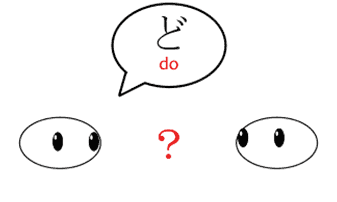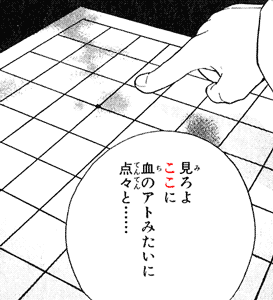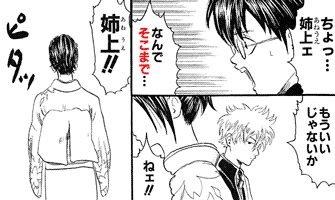In Japanese, koko, soko, asoko, doko ここ, そこ, あそこ, どこ mean "here," "there (near you)," "over there (not near you)," and "where?" They are kosoado words related to place.
Usage
Grammatically, koko, soko, asoko and doko are pronouns, so they can be used pretty much like nouns.
- koko desu ka?
ここですか?
[It] is here? (literally.)- Is [it] here?
- soko desu ka?
そこですか?
[It] is there?- Is [it] there?
- asoko desu ka?
あそこですか?
[It] is over there?- Is [it] over there?
- doko desu ka?
どこですか?
[It] is where?- Where is [it]?
Note that although the Japanese grammar remains the same, in the case of doko, which is interrogative, the English translation normally ends up being different.
- koko wa doko da!?
ここはどこだ!?
Here is where!?
Where is this place!?
Where am I!?
Some other examples:
- koko wa ii na
ここはいいな
Here's good, isn't it?- This city, this country, this house, this spot on the beach, etc.
- koko wa watashi no ie desu
ここは私の家です
My house is here.- This place is my house.
- asoko wa tashika ni kowai
あそこは確かに怖い
There is indeed scary. - okaasan wa doko desu ka?
お母さんはどこですか?
[Your] mother is where?- Where's your mother?
soko vs. asoko
The difference between soko and asoko is that soko そこ is close to the listener while asoko あそこ is not. Sometimes, soko そこ refers to a place the listener mentioned or is acting upon. Conversely, koko ここ is close to the speaker.
Often, you'll see soko translated as "there" and asoko translated as "over there," but that's not exactly what these words mean. To have a better idea:
- koko ここ
Here.
Somewhere close to the speaker. - There.
Somewhere far from the speaker. - Over there.
Somewhere very far from the speaker. - soko そこ
Somewhere close to the listener. - asoko あそこ
Somewhere far from both the speaker and the listener.
The difference between English and Japanese pronouns becomes clear in two scenarios:
First, when you have a place that's not far away from you, that you wouldn't say is "over there," but that's not toward the person whom you're talking with either.
For example, say you're talking with a friend in your room and he asks where did you put a manga you were reading the other day. You point to a table nearby where the manga is and say:
- asoko ni oita
あそこに置いた
[I] placed [it] there.
Since the table is not that far away from you, it's "there," but because it's not next to you or your friend, it's asoko.
The second case is when you have a place that's far away from you, but somehow close to the listener.
This could happen if you were communicating by shouting, yelling, screaming, or by smoke signals, or, maybe, by letters, or, more normally, by a simple phone call or e-mail.
- soko wa dou desu ka?
そこはどうですか?
There is how?- How [are things] over there?
- soko wa doko desu ka?
そこはどこですか?
There is where?- Where are [you calling from]?
- soko wa heiki ka?
そこは平気か?
There is peaceful?- Is everything alright over there?
In particular:
- soko e iku
そこへ行く
To go toward there.- I'm going there, to where you are.
- E.g. I'm going to your house.
- asoko e iku
あそこへ行く
To go toward [there].- I'm going there, to where you are not.
- E.g. I'm going to that place we talked about.
So we can see soko doesn't mean just "there." It could be two steps in front of you, or, if your friend on the phone is in the Antarctic Circle, soko could refer to the end of the world. It's all about the listener, not the actual distance from you.
Another case is when soko doesn't refer to a place directly around the speaker but somewhere that the speaker just mention or is acting upon. For example:
- soko wa tachi-iri kinshi
そこは立ち入り禁止
There is entrance forbidden.- That place is off limits.
- You can't go in there.
- This doesn't mean the listener has already entered the place. He could have mentioned it, or maybe he's about to enter it.
"There is" is not "There"
It's important to note that the English phrases "there is" and "there are" refer to the existence of things and not to a geographic location. This means that you can't say "there is a way" using soko or asoko, because such phrase refers to the existence of "a way" not to the location of "a way."
In Japanese, the verbs aru ある and iru いる are used to say "there is" something, and the i-adjective nai ない is used when there is not something.
- houhou ga aru
方法がある
A way exists.- There is a way.
- houhou ga nai
方法がない
A way is nonexistent.- There is no way.
Due to how plurals work in Japanese, it also works for "there are," "there are not."
- asoko ni futari ga iru
あそこに二人がいる
In there two people exist.- There are two people there.
koko de, koko ni
The difference between koko de and koko ni is that koko de ここで is used when an action takes place "here," while koko ni ここに is used when the action goes to a direction, to "here." For example:
- koko de hataraku
ここで働く
To work here.- "Here" is where the action of "working" will be done.
- koko ni kita
ここに来た
To have come here.
[Someone] came here.- You "come" and "go" places.
- In this case, the place where someone "came" was "here."
The difference between koko ni and koko e is that koko ni ここに means exactly "to here," while koko e ここへ means vaguely "toward here." It's less direct. They're interchangeable a lot of times, but e へ tends to be used instead of ni に in polite speech.
- koko e douzo
ここへどうぞ
[Please come] toward here.
In manga, often the main verb of a sentence is missing, implicit or cut short. At such times, it's good to remember that koko de means the action just happened to take place somewhere per chance and the speaker is adding that information, while koko ni is often used with verbs that require a location to be indicated. This may help you guess which verb is it. For example:
- miro yo
見ろよ
Look! - koko ni chi no ato mitai ni tenten to......
ここに血のアトみたいに点々と・・・・・・
In here, [something that] looks like blood marks [is stuck] in drops.
- ato 跡
Something left behind by something else, usually as evidence.
Tracks, traces, marks, scars, etc. - tenten to 点々と
Scattered around as drops, dots, points.
- ato 跡
- The phrase above ends in the adverb ten-ten to and is missing a verb. Since the phrase contains a koko ni, we can assume it's a verb that requires a location.
- Thus, it probably means "there is" something like blood here. Because if you exist, you have to exist somewhere.
- Or maybe drops of blood are "stuck" here. Because if it sticks, it has to stick to something. And so on.
koko ni aru, koko ni iru
The difference between koko ni aru and koko ni iru, both meaning that something "is here," is that koko ni aru ここにある is used with inanimate objects, while koko ni iru ここにいる is used with animate objects.
In other words, people, animals, etc. get ni iru, while things get ni aru.
- ore ga koko ni iru
俺がここにいる
I'm here. - Ai ga Koko ni Aru
♪ 愛がここにある ♪
Love is Here.
doko demo
When doko is followed by demo it becomes doko demo どこでも, which means "anywhere" or "wherever."
- doko demo ii
どこでもいい
Anywhere is good.
Wherever is good.- Doesn't matter where.
- Since "anywhere is good" it "doesn't matter where," after all, there's no place where it would be bad.
- okyakusama no onozomi nara,
doko demo kake-tsukemasu.
jidou shuki ningyou saabisu,
Vaioretto Evaagaaden desu.
お客様がお望みなら、
どこでも駆けつけます。
自動手記人形サービス、
ヴァイオレット・エヴァーガーデンです。
If [it's] the customer's wish,
[I'll] rush to wherever it is.
Automatic Note Doll service,
Violet Evergarden.
doko nimo
When doko is followed by nimo it becomes doko nimo どこにも, which means "anywhere" or "wherever" too, but in this case is used with verbs that would use the ni に particle.
- doko nimo nai
どこにもない
[That's] not in any place.
[That's] not anywhere. - doko nimo ikenai
どこにも行けない
Not able to go anywhere.
doko ka
The phrase doko ka どこか means "somewhere" or "anywhere." A place unknown. This is the interrogative pronoun doko plus the doubt particle ka.
- doko ka e ikimashou
どこかへ行きましょう
Let's go somewhere.
soko Figurative Usage
Sometimes, soko そこ, and some less times, asoko あそこ, are used in a figurative sense rather than a literal, physical, geographical sense.
That is, instead of meaning "there," a place, soko そこ can refer to a "there" of the context of the conversation various ways. This is a tricky because it extremely changes how soko gets translated.
soko as Retort
If you watch comedy anime, you may have seen a scene where the "retort," tsukkomi ツッコミ, of the straight (non-silly) guy went like this:
- Idiot A says a bunch of stupid stuff.
- Straight Guy thinks that's wrong on multiple levels.
- Idiot B says Idiot A is an idiot.
- Straight Guy agrees.
- Idiot B says the reason Idiot A is an idiot: it turns out to be some completely insignificant detail nobody would care about in this situation.
- Straight Guy retorts: soko?!
- Meaning: THAT, is what you have a problem with? Not all the other stuff?!
In such cases, the Straight Guy is commenting on the lack of common sense of Idiot B. What's important is that he uses the word soko to do that.
To understand how it works: imagine everything Idiot A said was written down on a metaphorical page. Idiot B points on such page what's wrong with what Idiot A said. Straight Guy is referring to the metaphorical place where Idiot B pointed as soko, "there."
soko ga ii
Following the same logic as above, the phrase soko ga ii そこがいい can sometimes mean "that's the good part of it," when talking about a facet of something. Specially when talking about what you like in something or someone.
Awkwardly, soko, which means "there," clearly end up translated as "that" instead. Fortunately, the i-adjective ii いい, "good," actually means "good" this time for once, which saves us a lot of trouble.
- Context: girls talk about a guy.
- datte mai no aniki
mechakucha kakkoii
jaa~~n ❤
だってマイの兄貴
メチャクチャカッコイイ
じゃ~~ん❤
[That's because] Mai's older brother is super cool~~❤ - kou ichi no toki
bokushingu intaahai
made itta tte
高一の時
ボクシングでIH(インターハイ)
までいったって
During first year of high school [he] even went to the boxing inter-high. - nanka waruppoku
nacchatta kedo
なんか悪っぽく
なっちゃったけど
[He] became sorta bad but... (bad in the delinquent sense.) - soko ga mata ii
tte musume ooi yoo
そこがまたいいっ
て娘おおいよォ
Girls [who] think that part, too, is good are many.- i.e. many girls think him looking a like a delinquent makes him even more attractive.
- chou iketeru yoo~~
超イケてるよォ~
[He's] looking super good~~ - a~~~n
あ~~~ん- *blushes*
- Masaki-sama❤
マサキ様❤- His name.
soko wo nantoka
Phrases such as soko wo nantoka そこをなんとか can show up when the speaker is trying to get the listener to do something about a part of a deal that sounds very unfavorable. It's generally an abbreviation of:
- soko wo nantoka shite kudasai
そこをなんとかしてください
[Please do something about that for me.]- nantoka suru なんとかする
To do it somehow. To handle it somehow.
- nantoka suru なんとかする
soko made
The phrase soko made そこまで, meaning literally "until there," or "up until there," can be used figuratively in various ways.
Let's start with the literal, physical meaning of soko made:
- koko kara soko made
ここからそこまで
From here to there.
From here to until there.
STAHP!!!
The phrase soko made! そこまで! is a way to tell people to "STOP!!!" doing whatever they're doing. Since made has this upper-limit meaning, soko made means that you shouldn't advance further than where you are now, you can only go "until there," so it means stop.
Everything Changed When the Fire Nation Attacked
The phrase soko made そこまで can mean "up until there it was...." This happens when it's used in telling stories that happened in the past. Up until there it was somehow, then, there was a turning point, and things changed.
- soko made wa daijoubu datta
そこまでは大丈夫だった
Up until there it was alright. - soko kara wa taihen datta
そこからは大変だった
From there on it was troublesome.
Determination.
The phrase soko made そこまで is sometimes used to refer to what lengths people go to do something. That is, they go "until there," far beyond where you'd expect or want them to go.
- nanimo soko made...
何もそこまで・・・
It's not something you'd need to go that far for.- This is a phrase cut short.
- It generally means that something happened and someone is overdoing it in reaction. That they're getting too agitated over nothing. Or getting too angry over nothing. It's not something that warrants such lengths.
- nanimo soko made iu koto wa nai darou
何もそこまで言うことはないだろう
It's not something [which warrants you] to say [something all the way] up to there, is it?- You don't have to say (to go) so far because of this.
- You don't have to say something like that because of something like this.
- You're overdoing it.
asoko Euphemism
The word asoko あそこ specifically is also used as an euphemism for one's genitals. Literally, it refers to "over there," to "that place."
Kanji
Note that although the words koko, soko, asoko, and doko are normally written with hiragana, they do have kanji, so, in some rare cases, you may find them actually written with kanji:
- koko 此処
- soko 其処
- asoko 彼処
- doko 何処





Very nice!
ReplyDeleteThanks, very helpful!
ReplyDeleteIf you have trouble remembering it. Just listen to the Smile Dk song "Koko Soko."
ReplyDeleteSoko 10 example
ReplyDeleteThere is an usage of どこ which I cannot find reference to anywhere, it's where they use どこ to as "who is that company, group, or organization?", like「この会社はどこですか?」for "who is this company?" (there is probably a better example)
ReplyDeleteHere is a guy mentioning this but I couldn't find anything else. Although I know I have heard it somewhere else though.
I figured that you might want to add that case since is something so peculiar.